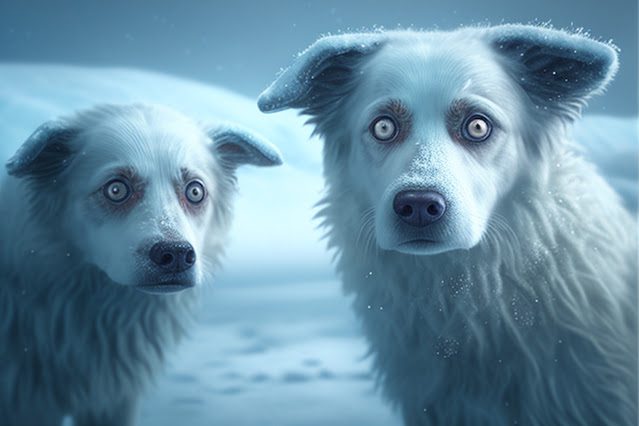Frostbite is a serious condition that occurs when the skin and tissues freeze due to exposure to cold temperatures. It is most common in the ears, tail, and paws, as these areas are more susceptible to frostbite due to their reduced circulation.
If caught early, frostbite can be treated and your dog can make a full recovery. However, if left untreated, frostbite can lead to serious complications, including tissue damage and amputation.
Treatment for frostbite typically involves rewarming the affected tissue, which can be a slow and painful process. The tissue will need to be rewarmed gradually to prevent further damage, and your dog may need to be given pain medication to help manage the pain.
Once the tissue has been rewarmed, your veterinarian will likely prescribe antibiotics to help prevent infection and may recommend a course of physical therapy to help improve circulation and promote healing. In some cases, surgery may be necessary to remove damaged tissue.
It is important to note that the recovery process can be slow, and it may take several weeks or even months for your dog to fully heal. In severe cases, the recovery process can be more complicated and may involve multiple surgeries or other treatments.
To prevent frostbite in your dog, it is important to limit their exposure to cold temperatures and to ensure they have access to warm, dry shelter. If you suspect that your dog may be suffering from frostbite, it is important to seek veterinary care as soon as possible.
In addition to the treatment steps described above, there are a few things you can do at home to help your dog heal from frostbite:
Keep the affected area clean and dry: To prevent infection, it is important to keep the affected area clean and dry. Use a clean, soft cloth to gently clean the area, and be sure to dry it thoroughly.
Avoid rubbing or massaging the affected area: Rubbing or massaging the affected area can cause further damage to the tissue. Instead, gently wrap the area in a clean, dry cloth.
Provide your dog with plenty of rest: Rest is important for healing, so make sure your dog has a quiet, warm place to rest and recover.
Keep your dog hydrated: Drinking plenty of fluids can help to improve circulation and promote healing. Be sure to offer your dog plenty of clean, fresh water to drink.
Follow your veterinarian’s instructions: Be sure to follow your veterinarian’s instructions for caring for your dog’s frostbite. This may include giving your dog medications as prescribed and bringing your dog back for follow-up visits.
It is important to be patient and understanding during your dog’s recovery process. Healing from frostbite can be a slow and sometimes difficult process, but with proper care and treatment, your dog can make a full recovery.



